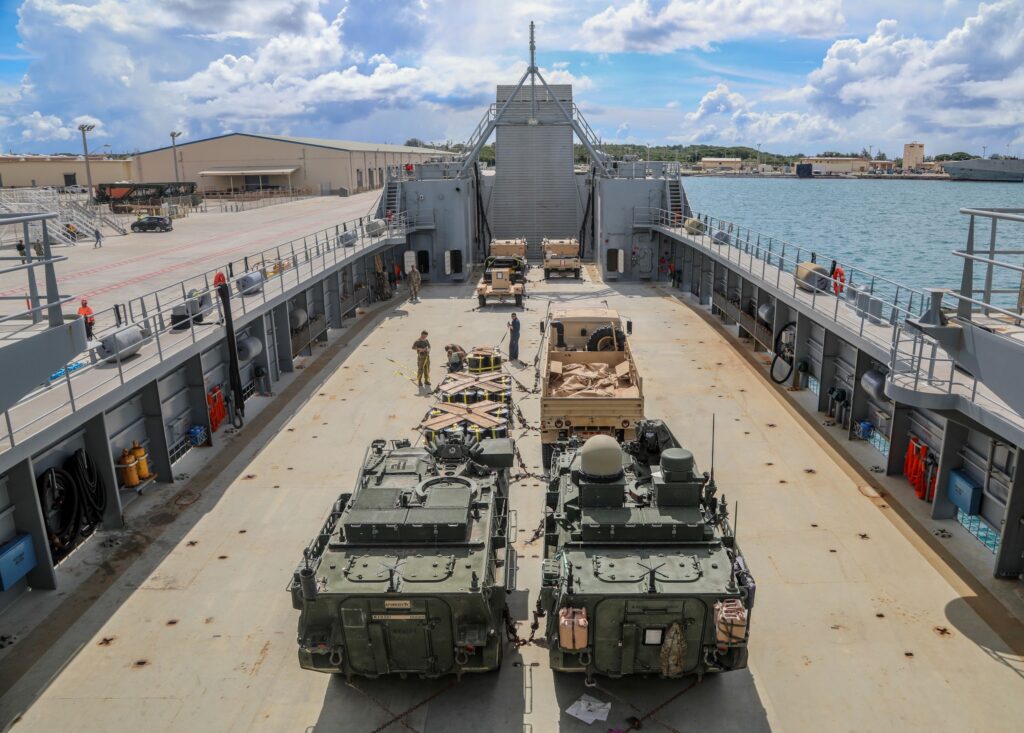
ARLINGTON, Va. — The U.S. Navy’s program to build a force of light amphibious warships faces challenges, including an uncertain amphibious warfare fleet force structure requirement and a risk of requirements creep, according to analysts.
Eric Labs, senior analyst for Naval Forces and Weapons, Congressional Budget Office, and Ron O’Rourke, naval affairs analyst for the Congressional Research Service, spoke Feb. 8 at the National Defense Industrial Association’s Expeditionary Warfare Conference, addressing Navy shipbuilding plans with a focus on amphibious warfare ships.
The Navy, in response to the need of the Marine Corps for a large number of smaller amphibious warfare ships for distributed maritime operations and expeditionary advance base operations, is planning to design and build the light amphibious warship to augment the amphibious lift fleet. The LAW would be able to beach and discharge Marines and their vehicles on a shore.
Labs pointed out that the future of amphibious forces is “facing challenging times for the next five years,” and finds that there is “no natural constituency” for the LAW.
Labs said the number of LAWs needed by the fleet has not been refined. Recent shipbuilding plans, he pointed out, have variously assumed a build range of 24-35 LAWs. The requirement for large and medium-sized amphibious warfare ships — amphibious assault ships (LHA/LHDs) and amphibious transport dock ships (LPDs) — is no longer 38 ships, but over the last year variously is said to be 24 to 32 ships. The Navy has not provided to Congress a 30-year shipbuilding plan for two years.
O’Rourke warned against requirements creep that could increase the cost of the LAW program and threaten the Navy’s estimate of a LAW’s cost of $130 million to $150 million.
“The LAW represents an effort to break that price trend,” O’Rourke said.
He noted the success of the Arleigh Burke-class guided-missile destroyer (DDG) in its beginnings, when the Navy determined to build five DDGs in one fiscal year, designing ships not just with capabilities in mind but also with numbers of ships in mind, and was able to meet its goal of five in one year.
O’Rourke noted there is some pushback in Congress about the LAW concept because of concerns about the survivability of the ship and of the ability to resupply Marines inside an island chain where the Marines would be delivered.
O’Rourke also noted a suggestion as an option that a small number U.S. Army’s logistic support vessels — similar in size to that envisioned for the LAW — be used as surrogates for the LAW, as a bridge to the LAW. The Army LSVs are equipped with a bow ramp to discharge vehicles on shore.
- Insitu Going Strong at 30, Focusing on Maritime Operations - April 8, 2024
- Navy Awards Boeing Additional Funds for MQ-25 Drones for Testing - April 3, 2024
- Benign 4th Fleet AOR Useful for Unmanned Vehicle Operationalization, Admiral Says - March 27, 2024






